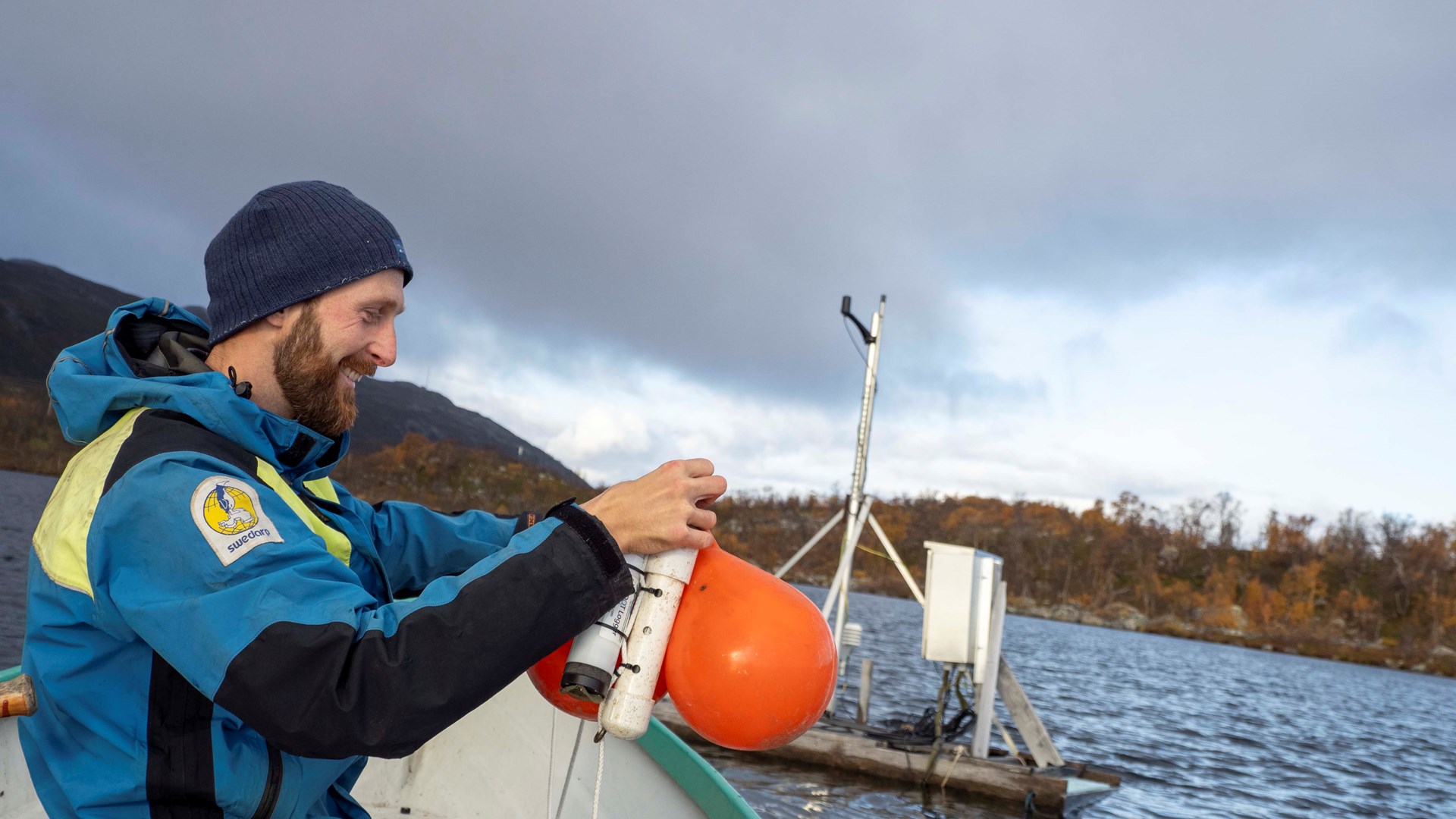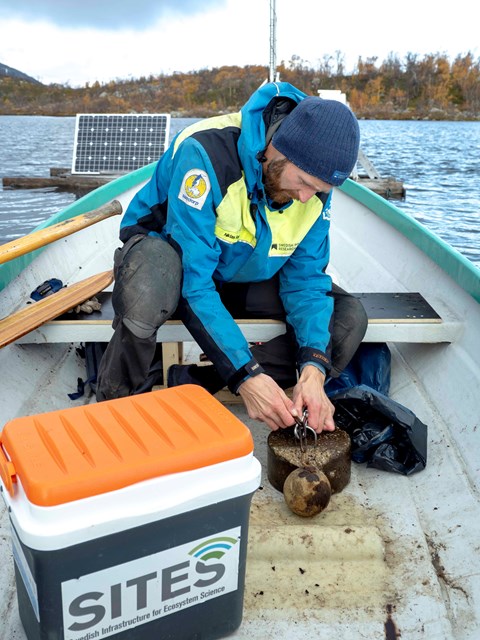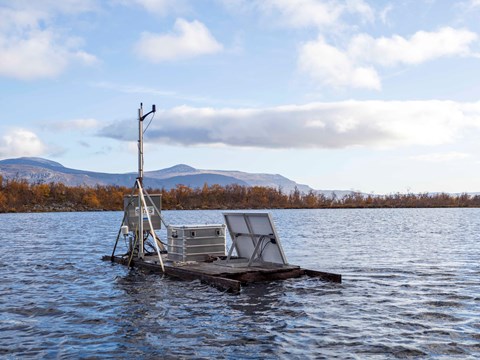Preparations for winter at Abisko Scientific Research Station
 Niklas Rakos is preparing the sensor string, which consists of a line, buoys, sensors, and a weight. Photo: Melina Granberg
Niklas Rakos is preparing the sensor string, which consists of a line, buoys, sensors, and a weight. Photo: Melina Granberg
Autumn's beautiful colours have faded, and the cold is settling over Abisko. This necessitates specific preparations to ensure that the measurements within SITES Water can continue when winter arrives.
A couple of weeks ago, Niklas Rakos, who works at the Abisko Scientific Research Station, placed a sensor string in the lake Almbergasjön. The instrument consists of a long line with a weight at the bottom, buoys, and sensors. The length of the rope is calculated so that the buoys will end up approximately one meter below the water's surface. This prevents the buoys from freezing in the ice during the winter. The sensors measure conductivity, temperature, and dissolved oxygen at three different depths, along with a pressure sensor that provides the precise depth for each parameter.
The sensor string replaces some measurements taken from the raft deployed in Almbergasjön during the ice-free seasons. The instruments on the raft are connected to the internet and collect data at a higher frequency than is possible with the line of sensors. However, the raft was retrieved from the water a day before the lake froze. The fact that the winter sensors in the water have been in place for two weeks concurrently with the summer sensors on the raft means there is an overlap in data, simplifying the calibration of the sensors.
The next step involves transitioning from summer to winter sensors in Miellejohka, a mountain stream from Lapporten to Torneträsk. The flowing water has not yet frozen, but the plan is to switch instruments within a few weeks.


Swedish Infrastructure for Ecosystem Science (SITES)
SITES is a nationally coordinated infrastructure for terrestrial and limnological field research that will help to strengthen Swedish research based on measurements and experiments carried out in the field. Abisko Scientific Research Station has been a part of SITES since the start in 2013. The research station is participating in two of SITES’ infrastructures: SITES Water och SITES Spectral.
